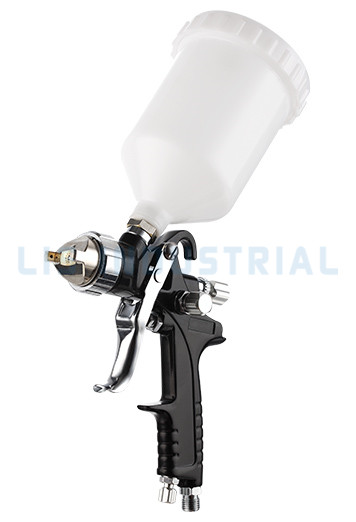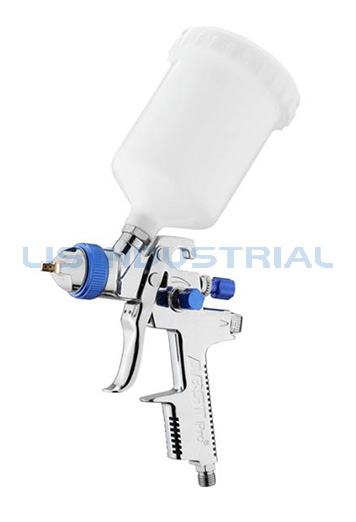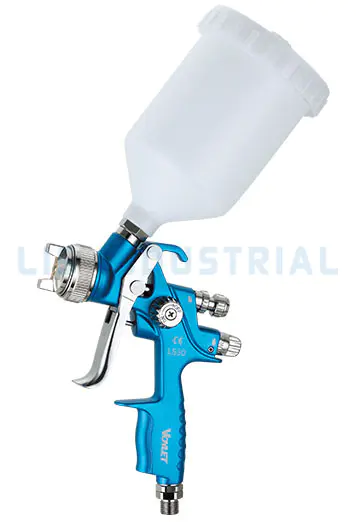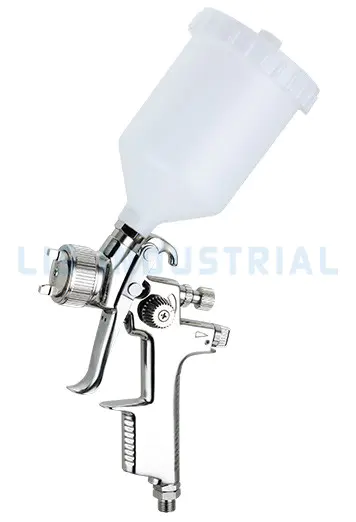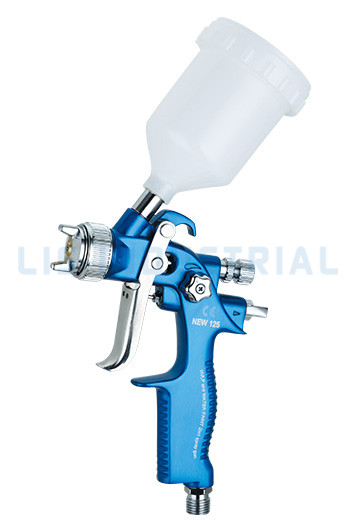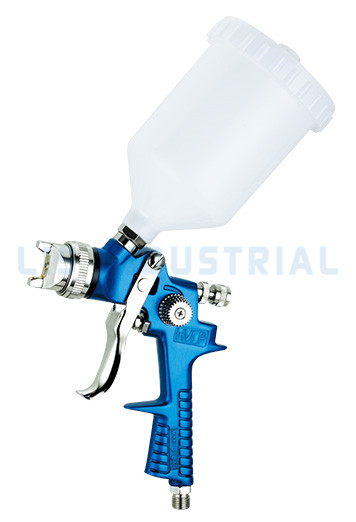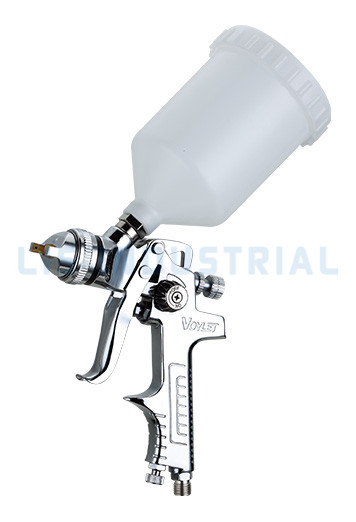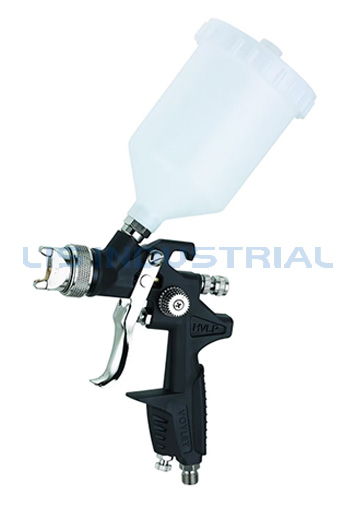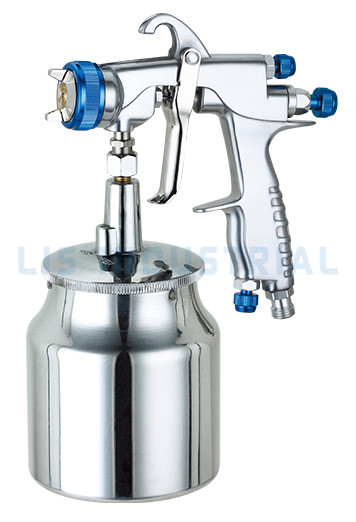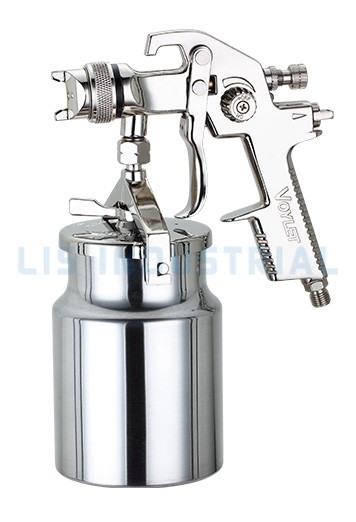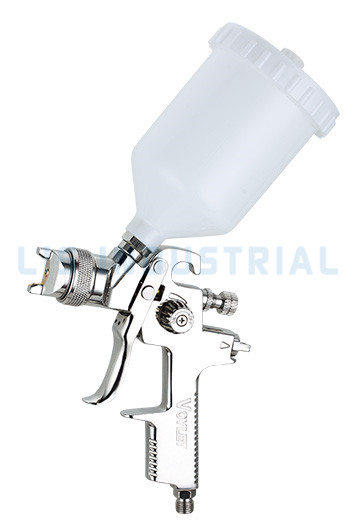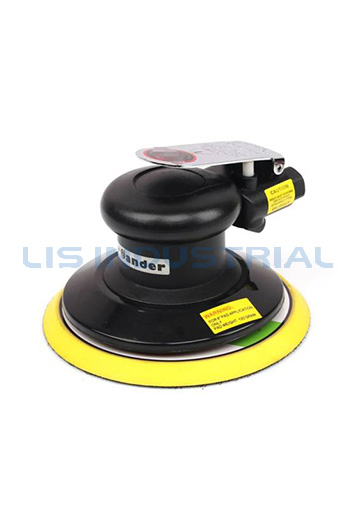1. Basic working principle
The touch-up spray gun uses compressed air (usually at a pressure of 0.3-0.6 MPa) to flow at high speed at the nozzle, creating a local vacuum (negative pressure zone). This negative pressure draws the paint from the tank into the nozzle. For example, a gravity spray gun uses the paint's own gravity to assist the flow, while a suction spray gun relies on negative pressure to directly draw the paint from the bottom. The paint and compressed air are mixed at the front end of the spray gun, and the high-speed airflow breaks the paint into micron-sized droplets. The special design of the air cap further optimizes the atomization effect to ensure that the paint is evenly dispersed. For electric spray guns, the electromagnetically driven piston reciprocates at high speed to form high pressure to atomize and spray the paint, but the atomization fineness is usually lower than that of pneumatic spray guns. The degree of atomization and spray thickness can be controlled by adjusting the air volume regulating valve and paint flow valve of the spray gun.
2. Main types of touch-up spray guns
Gravity spray gun
Principle: The paint cup is located above the spray gun, and the paint is transported by the dual effects of gravity and negative pressure.
Advantages: Suitable for small area repair (such as car scratches), high paint utilization rate (about 60%), flexible operation.
Suction spray gun
Principle: Completely rely on negative pressure to absorb paint from the bottom paint tank.
Features: Suitable for medium area spraying, but changes in paint viscosity can easily affect flow stability.
Pressure-feed spray gun
Principle: The paint is conveyed by pressure through an external pressure tank or pump, separated from the spray gun.
Features: High-efficiency atomization is achieved through low air pressure (<0.07 MPa) and high air flow, and the paint transfer efficiency is more than 65%.

 Search
Search
 English
English 中文简体
中文简体 Deutsch
Deutsch